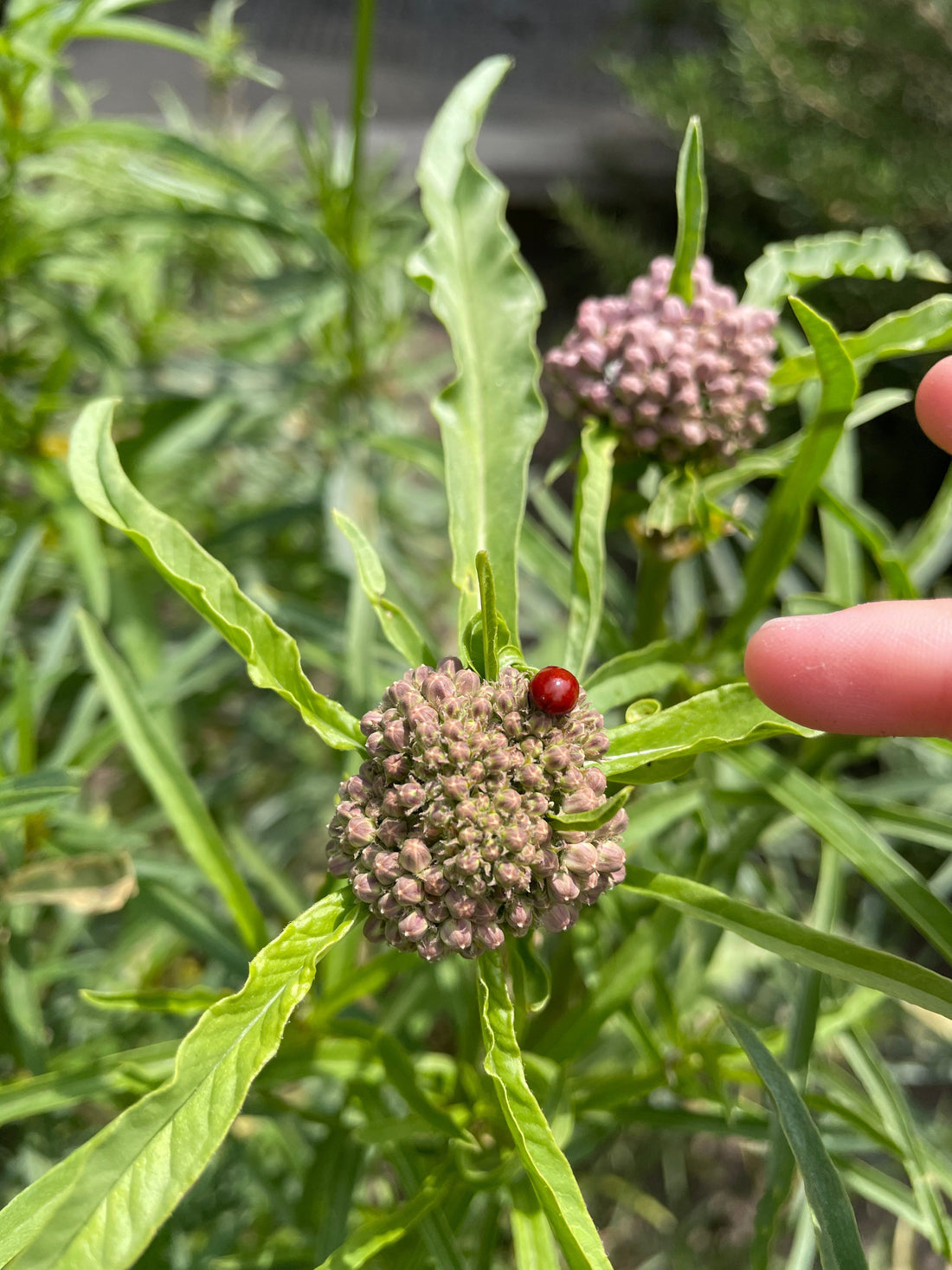Milkweed & Monarch Butterflies
by Melanie Rufener
What is Milkweed and Why is it Important?
Milkweed is a genus of flowering plants containing over 200 different species - and these are some of the most complex flowers in the plant kingdom. Narrowleaf milkweeed (scientific name Aclepias fascicularis) is a special species of milkweed found on the west coast of the United States and Baja California that is considered a host plant for the monarch butterfly.
The monarch butterfly population has been steeply declining in the last few years, mostly due to pesticide usage and loss of habitat, so planting milkweed is critical for the survival of the few monarch butterflies that are left. If you’re looking for an easy way to get yourself and/or your family involved in more activities that will have a direct impact on the environment, planting native milkweed is one of the best things you can do to get started!
How to Grow Narrowleaf Milkweed
Narrowleaf milkweed (Asclepias fascicularis) is easy to grow, resilient, and takes minimal water once established. Milkweed is a natural source of nectar for monarch butterflies and plays a critical role in sustaining the monarch population, so it’s important to plant plenty all year round.
If you’re located in Zone 10b (Southern California), here’s how to grow milkweed at home to attract monarch butterflies and other pollinators:
- Plant during spring, summer, and fall
- Seeds planted during winter will start blooming once soil temperatures increase in early spring
- If you’re starting from a seedling or small milkweed plant, start by digging a hole about 2x the size of your plant
- Gently remove the plant from its pot and place into its new home (the hole you just dug)
- Water generously daily for the first week while the milkweed is establishing itself
- Water once a week thereafter
-
Milkweed will go dormant in winter and appear dead but will come back early spring

Monarch Population and Pesticide Usage
It is critically important to avoid using any kind of pesticides or sprays on or near milkweed, as this will be detrimental to any caterpillars and monarch butterflies who lay on contaminated milkweed - using pesticides is completely unnecessary and does much more ecological harm than good.
A large number of monarchs recently died at an overwintering site in Pacific Grove, California due to nearby pesticide usage. Please be cautious with any kinds of sprays, insecticides, fungicides, or fertilizers that you use and be mindful of the surrounding wildlife. For pesticide alternatives and to learn more, check out the Xeres blog article on pesticides and some better alternative options: xerces.org/pesticides.
Read more about the mass casualty of monarch butterflies due to pesticides here: How Urban Pesticides Can Harm Monarch Butterflies: A Cautionary Tale from California.
More Resources on Milkweed and Monarchs
The non-profit Xerces Society is a well-known organization that focuses on invertebrate conservation and publishes research on monarch butterflies and other invertebrates that are at risk due to human activity.
Check out CalScape’s article on narrowleaf milkweed for more information and to check local SoCal nurseries for availability!
Looking to start seeds yourself?
Check out our narrowleaf milkweed seeds grown right here in Long Beach, California!

